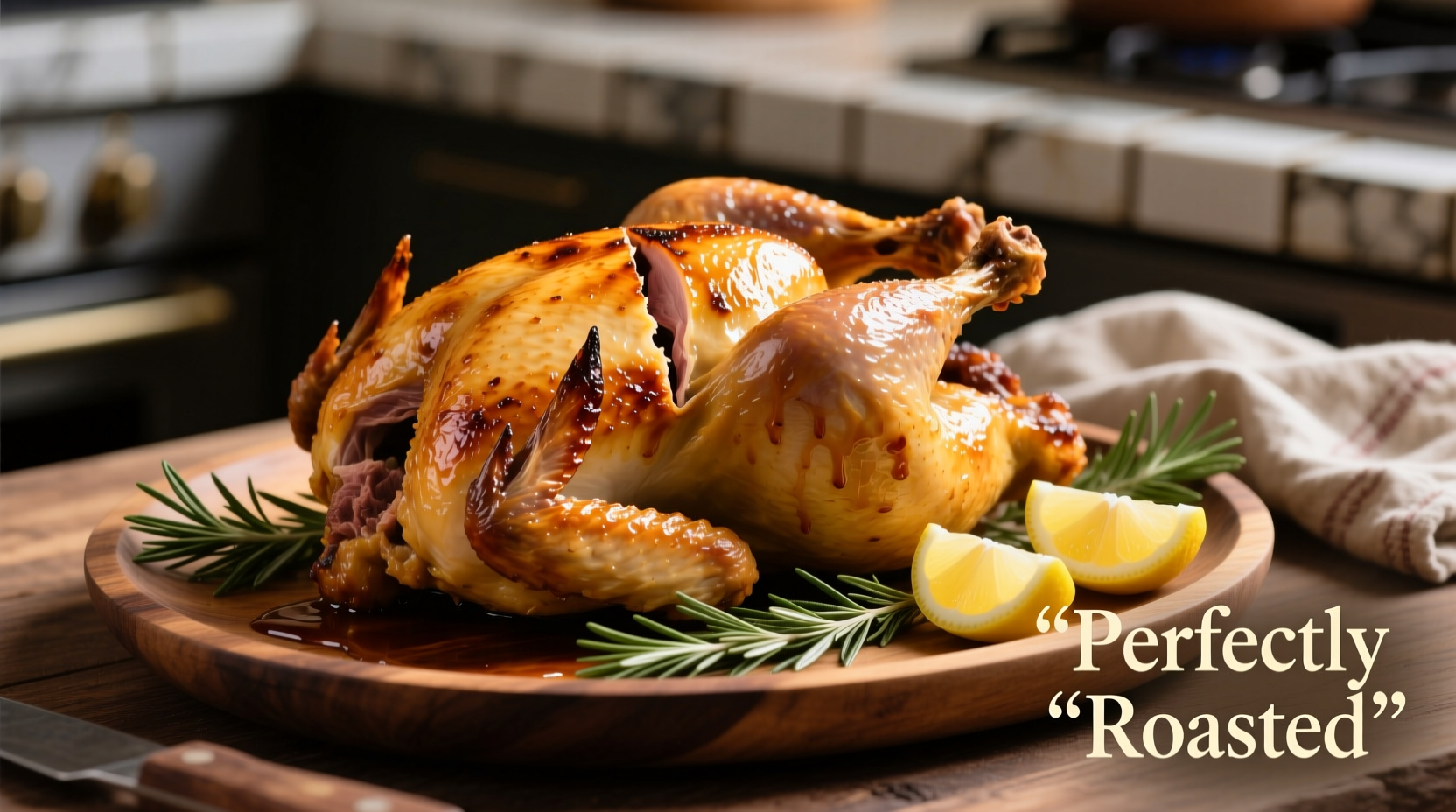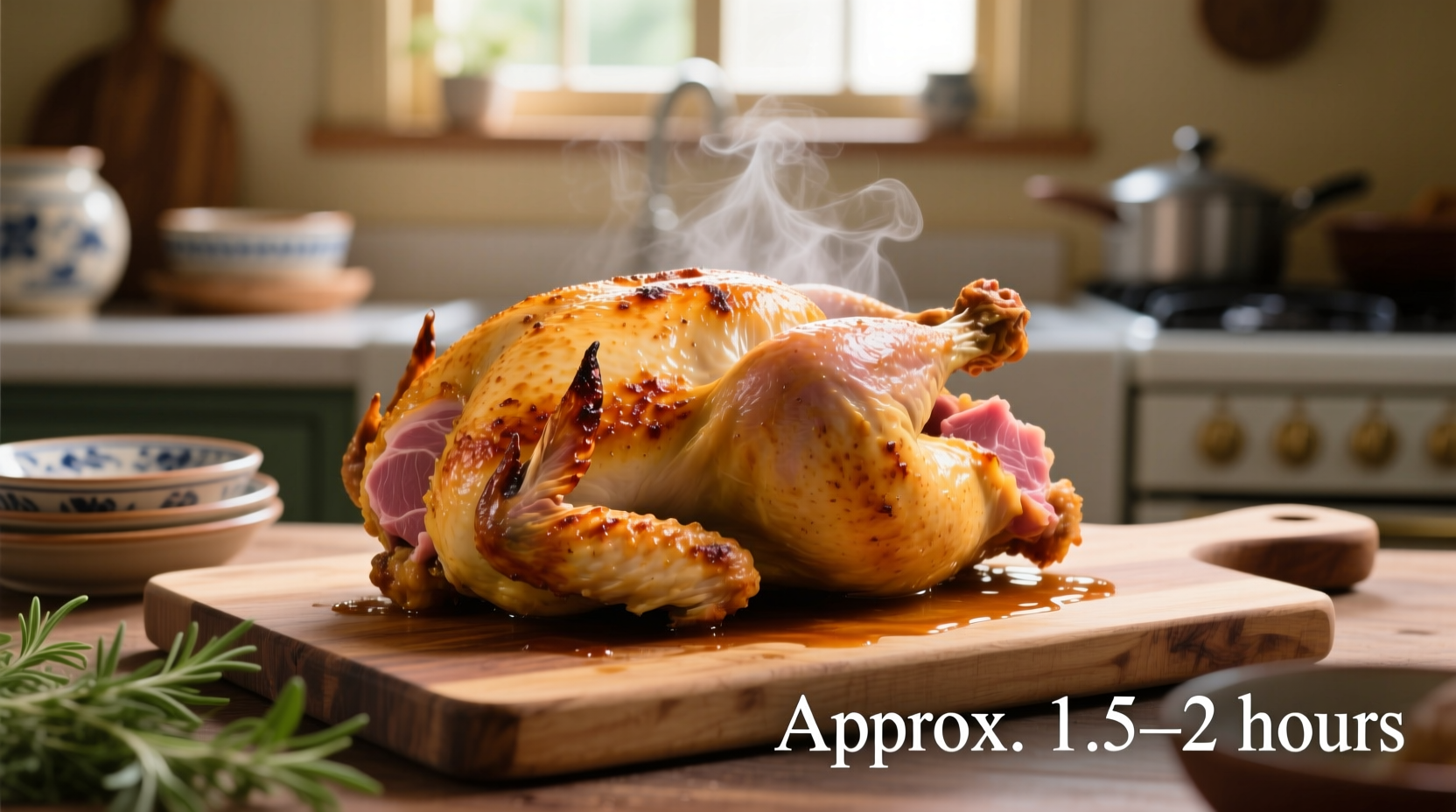Getting rotisserie chicken cooking time right separates a juicy, flavorful centerpiece from a dry disappointment. Whether you're using a backyard rotisserie or oven setup, understanding the precise timing factors prevents undercooked poultry risks while maximizing tenderness. This guide delivers professional kitchen insights you can apply immediately, with verified temperature guidelines and practical adjustments for different chicken sizes.
Why Cooking Time Matters for Food Safety and Quality
Rotisserie cooking combines radiant heat with constant rotation, creating unique heat distribution compared to conventional roasting. The USDA Food Safety and Inspection Service mandates that all poultry reach a minimum internal temperature of 165°F (74°C) to eliminate harmful bacteria like salmonella and campylobacter. However, hitting this temperature at the right time ensures both safety and quality.
| Poultry Component | Minimum Safe Temperature | Optimal Texture Temperature |
|---|---|---|
| Breast Meat | 165°F (74°C) | 150-155°F (66-68°C) |
| Thigh and Leg | 165°F (74°C) | 170-175°F (77-79°C) |
| Wings | 165°F (74°C) | 165°F (74°C) |
This apparent contradiction explains why precise timing matters: breast meat becomes dry when cooked beyond 155°F, while dark meat requires higher temperatures for optimal tenderness. The rotisserie's continuous movement helps balance this challenge by exposing all parts to consistent heat.
Calculating Your Exact Rotisserie Chicken Cooking Time
Forget one-size-fits-all cooking times. Your chicken's weight and your equipment determine the precise duration needed. Follow this professional formula:
- Measure your chicken's exact weight (typically 3-6 lbs for standard birds)
- Apply the time-per-pound rule: 15-20 minutes per pound at 350°F (175°C)
- Verify with thermometer during the final 15 minutes
For example, a 4.5 lb chicken needs approximately 67-90 minutes total cooking time. Start checking temperature 15 minutes before the minimum estimated time.
Temperature Adjustments for Perfect Results
While 350°F provides the best balance of crisp skin and moist meat, you might adjust based on your equipment:
- 325°F (163°C): Adds 10-15% to cooking time but yields exceptionally tender meat
- 375°F (190°C): Reduces time by 10% but requires careful monitoring to prevent over-browning
- Charcoal rotisserie: Maintain 300-325°F for even cooking without flare-ups
According to the FDA Food Code, poultry must reach 165°F within 4 hours of being in the temperature danger zone (40°F-140°F) to prevent bacterial growth. Rotisserie cooking typically keeps poultry out of this zone for less than 2 hours when properly monitored.
Step-by-Step Rotisserie Cooking Process
Follow this professional sequence for foolproof results:
- Preparation (15 minutes): Pat chicken completely dry, season cavity, truss legs
- Preheat (20 minutes): Bring rotisserie to 350°F before loading chicken
- Cooking (60-90 minutes): Monitor temperature starting at 45 minutes for 4 lb bird
- Final Check (5 minutes): Verify 165°F in breast and thigh with instant-read thermometer
- Resting (15 minutes): Essential for juice redistribution before carving

Troubleshooting Common Timing Issues
Even with careful planning, variables affect cooking time. Here's how to adjust:
- Chicken cooking too fast: Reduce temperature by 25°F and check every 10 minutes
- Uneven browning: Adjust chicken position on spit or shield lighter areas with foil
- Cold spots in meat: Verify rotisserie motor is turning consistently (1-2 RPM ideal)
- Smoke issues: Trim excess fat that causes flare-ups without compromising moisture
Remember that stuffed chickens require 20-25% more cooking time than unstuffed birds. Always check the stuffing temperature separately—it must also reach 165°F.
Pro Tips for Juicy, Flavorful Results Every Time
Professional kitchens achieve consistent results through these techniques:
- Dry brine overnight: Salt the chicken 12-24 hours before cooking for deeper seasoning and moisture retention
- Butter under skin: Creates a protective layer that bastes meat continuously during rotation
- Wood chip infusion: Add soaked fruitwood chips to charcoal for subtle flavor complexity
- Temperature mapping: Check multiple points in breast and thigh to ensure even cooking
For the crispiest skin, increase temperature to 400°F for the final 10 minutes of cooking. The constant rotation prevents burning while maximizing browning.











 浙公网安备
33010002000092号
浙公网安备
33010002000092号 浙B2-20120091-4
浙B2-20120091-4